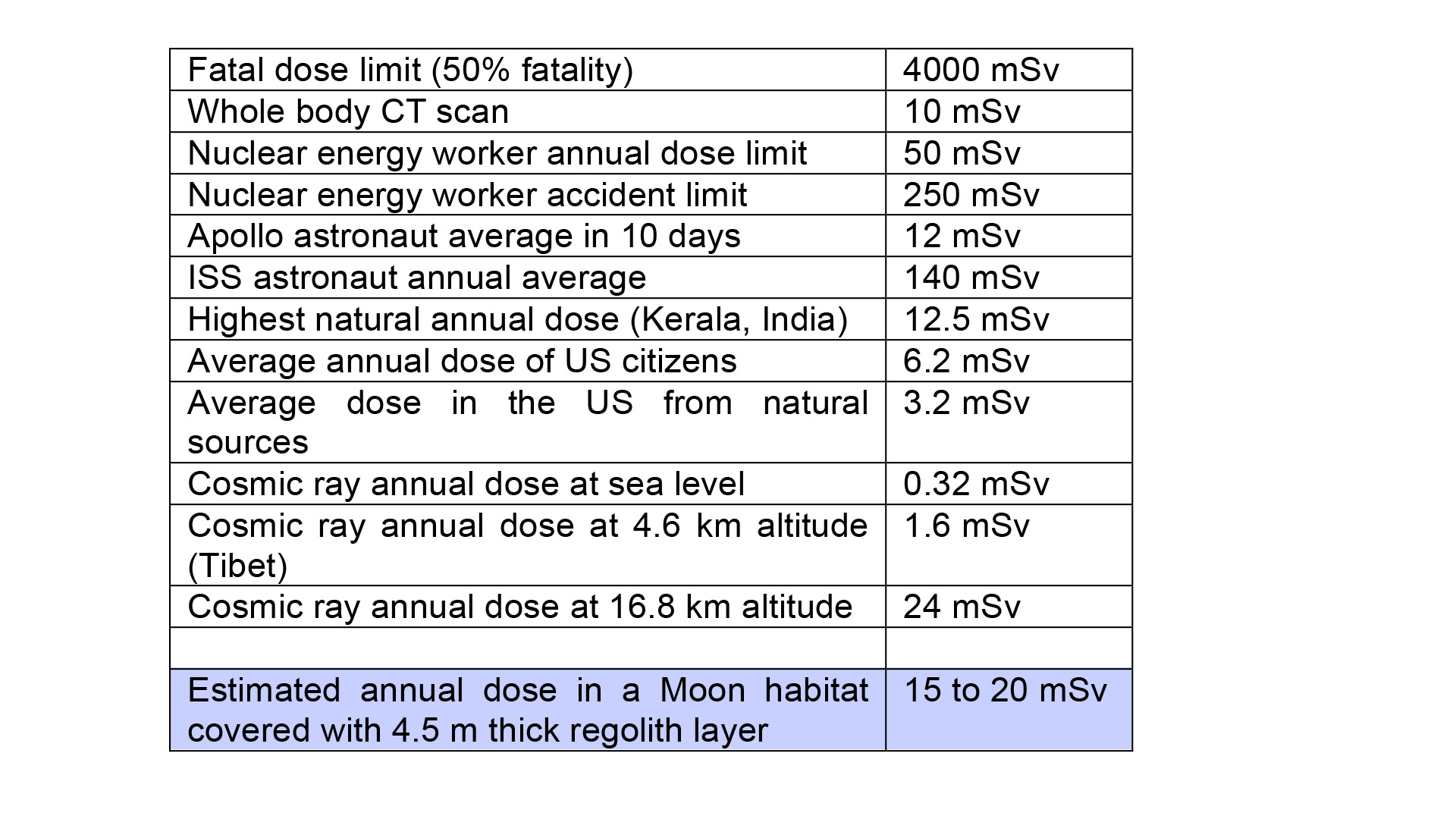4. Protection from Radiation
Solar particle events come horizontally on the lunar poles, while galactic cosmic rays come from all directions in space.
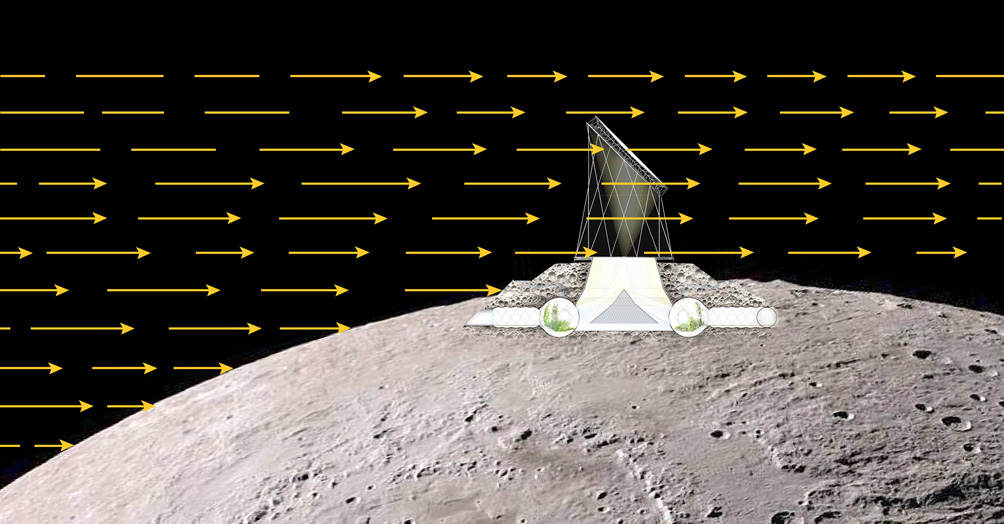
Galactic cosmic rays also produce secondary radiation when they hit the shielding material.
With the first 50g/cm2 of shielding about 1/3rd of the galactic cosmic rays is absorbed, which is by far not enough.
It needs about 300 grams per cm2 of shielding material to absorb the secondary radiation, and only from then on with increasing mass more radiation is shielded more effectively.
By covering most parts of our structure with 4,5 meters of loose regolith we achieve a shielding of 800g/cm2.
However, this diagram refers to a particle flux that hits the surface of the shielding material in a 90° angle. But in reality the angle of incidence is quite random.
Arriving in a flatter angle, a large portion of the radiation has to pass through more shielding material thickness than the perpendicular flux. Thus, the effective dose which the crew receives is even lower.
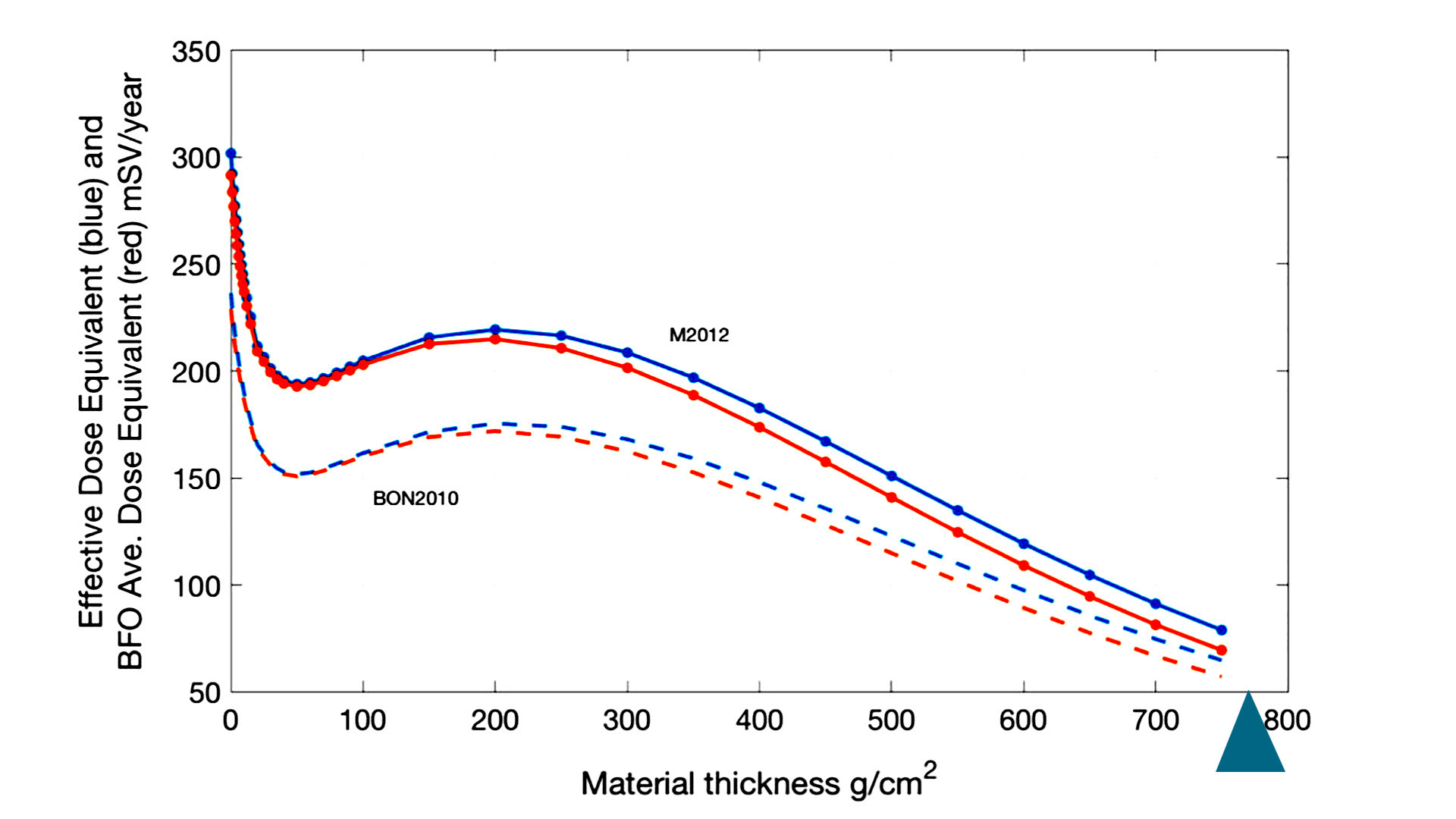
The artificial crater is a zone where cosmic radiation is not blocked and can reach the greenhouse. But it only is a fraction of the radiation that reaches the surface of the Moon.
Inside the greenhouse, the points closest to the window receive the most cosmic radiation. Through the artificial crater each point receives a cone of cosmic radiation. On open surface, radiation can come within a 180° degree cone from all directions. In our case the cone limited by the crater rim, shall not be wider than 45 degree in average. That reduces the received radiation to 1/16th compared to an open surface:
(1/180 * 45)2 = 1/16
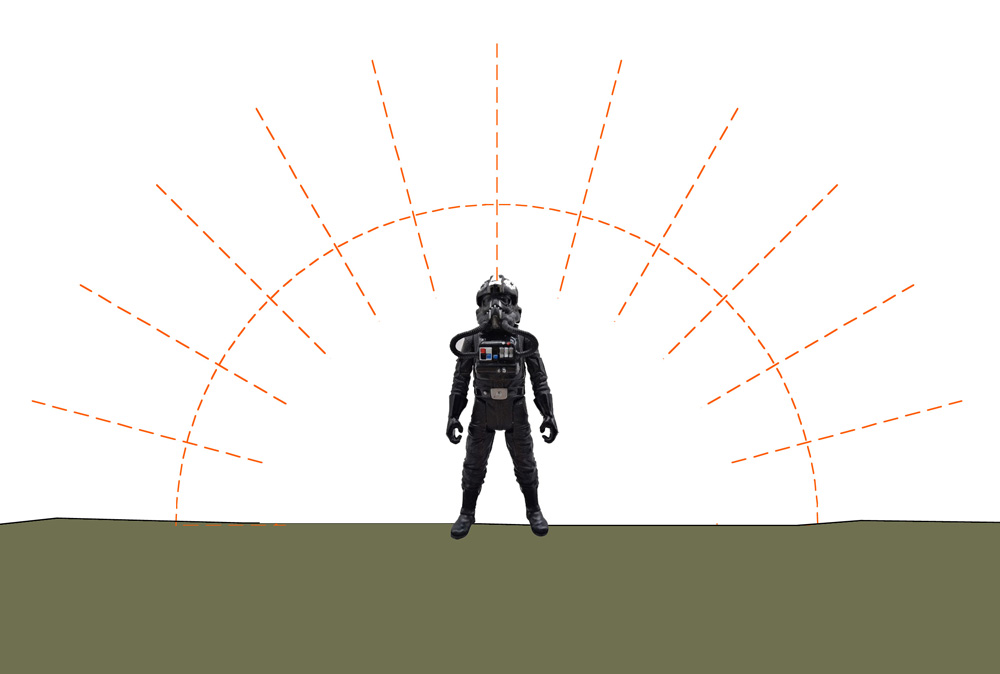
On the surface, cosmic radiation comes from all directions within a 180° angle cone.
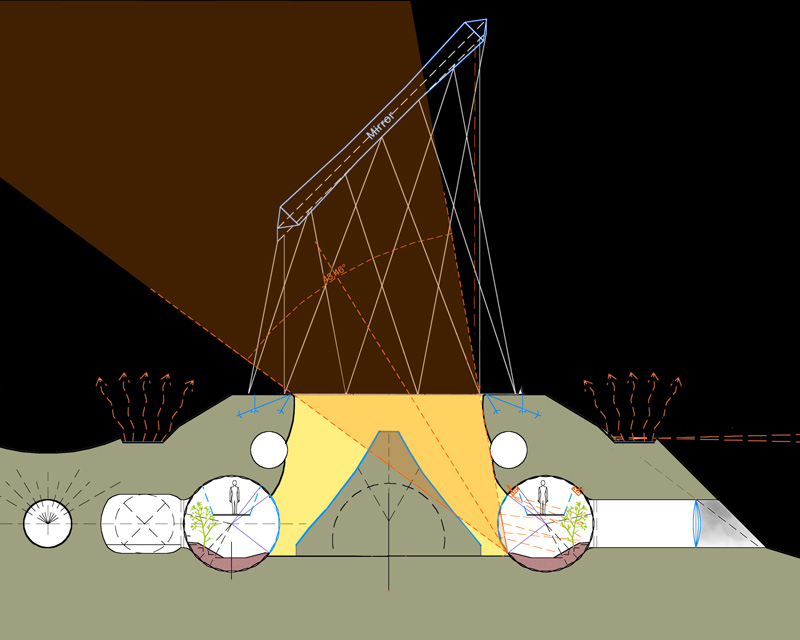
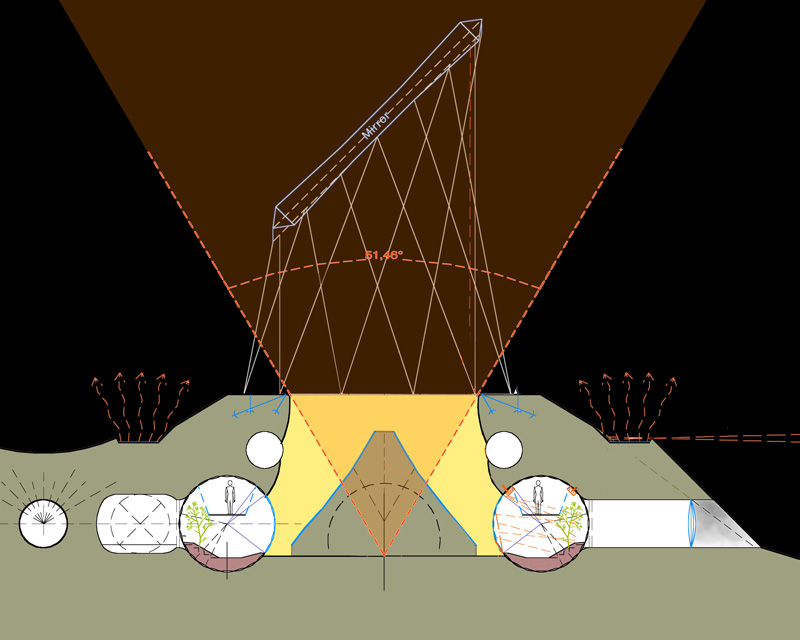
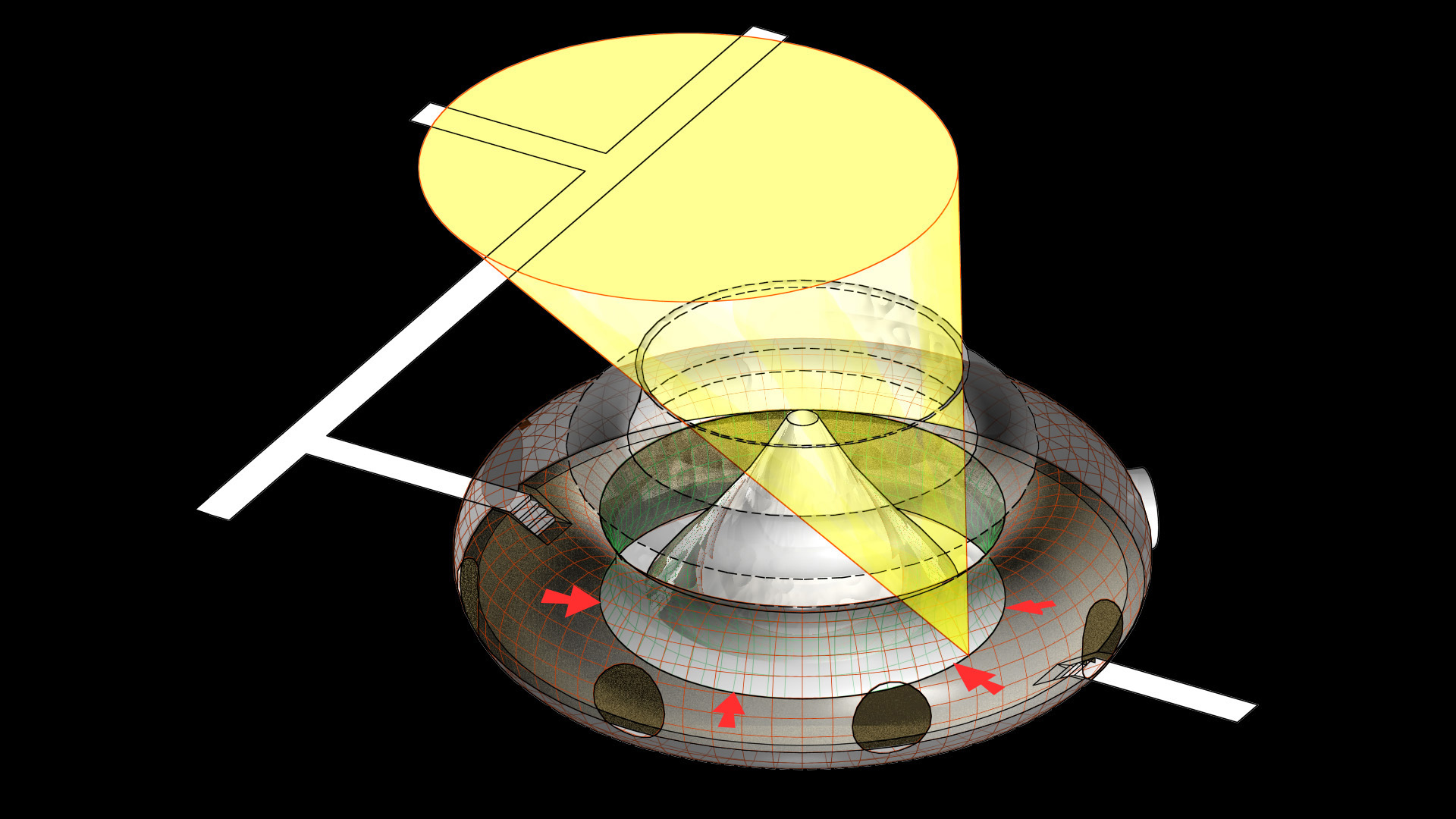
Humans would not spend much time at these most exposed points near the greenhouse window. At any other point deeper inside the greenhouse the perceived cosmic radiation is much less.
Taking in account the even more effective shielding of radiation arriving in flat angles, the average annual radiation dose can be kept under 25 milisievert inside the greenhouse and under 15 milisievert inside the sleeping compartments.
This is well below the legal nuclear energy worker annual dose limit of 50 milisievert.
